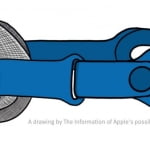
An article review format allows scholars or students to analyze and evaluate the work of other experts in a given field. Outside of the education system, experts often review the work of their peers for clarity, originality, and contribution to the discipline of study.
When answering the questions of what is an article review and how to write one, you must understand the depth of analysis and evaluation that your instructor is seeking.
Contents
What Is an Article Review
That is a type of professional paper writing which demands a high level of in-depth analysis and a well-structured presentation of arguments. It is a critical, constructive evaluation of literature in a particular field through summary, classification, analysis, and comparison.
If you write a scientific review, you have to use database searches to portray the research. Your primary goal is to summarize everything and present a clear understanding of the topic you’ve been working on.
Writing Involves:
- Summarization, classification, analysis, critiques, and comparison.
- The analysis, evaluation, and comparison require use theories, ideas, and research, relevant to the subject area of the article.
- It is also worth nothing if a review does not introduce new information, but instead presents a response to another writer’s work.
- Check out other samples to gain a better understanding of how to review the article.
Types of Review
Journal Article Review
Much like all other reviews, a journal article review evaluates strengths and weaknesses of a publication. A qualified paper writer must provide the reader with an analysis and interpretation that demonstrates the article’s value.
Research Article Review
It differs from a journal article review by the way that it evaluates the research method used and holds that information in retrospect to analysis and critique.
Science Article Review
Scientific article review involves anything in the realm of science. Often, scientific publications include more information on the background that you can use to analyze the publication more comprehensively.
Formatting an Article Review
The format of the article should always adhere to the citation style required by your professor. If you’re not sure, seek clarification on the preferred format and ask him to clarify several other pointers to complete the formatting of an article review adequately.
How Many Publications Should You Review?
- In what format you should cite your articles (MLA, APA, ASA, Chicago, etc.)?
- What length should your review be?
- Should you include a summary, critique, or personal opinion in your assignment?
- Do you need to call attention to a theme or central idea within the articles?
- Does your instructor require background information?
When you know the answers to these questions, you may start writing your assignment. Below are examples of MLA and APA formats, as those are the two most common citation styles.

Using the APA Format
Articles appear most commonly in academic journals, newspapers, and websites. If you write an article review in the APA format, you will need to write bibliographical entries for the sources you use:
- Web: Author [last name], A.A [first and middle initial]. (Year, Month Date of Publication). Title. Retrieved from {link}
- Journal: Author [last name], A.A [first and middle initial]. (Publication Year). Publication Title. Periodical Title, Volume(Issue), pp.-pp.
- Newspaper: Author [last name], A.A [first and middle initial]. (Year, Month Date of Publication). Publication Title. Magazine Title, pp. xx-xx.
Using MLA Format
- Web: Last, First Middle Initial. “Publication Title.” Website Title. Website Publisher, Date Month Year Published. Web. Date Month Year Accessed.
- Newspaper: Last, First M. “Publication Title.” Newspaper Title [City] Date, Month, Year Published: Page(s). Print.
- Journal: Last, First M. “Publication Title.” Journal Title Series Volume. Issue (Year Published): Page(s). Database Name. Web. Date Month Year Accessed.
The Pre-Writing Process
Facing this task for the first time can really get confusing and can leave you being unsure where to begin. To create a top-notch article review, start with a few preparatory steps. Here are the two main stages to get you started:
Step 1: Define the right organization for your review. Knowing the future setup of your paper will help you define how you should read the article. Here are the steps to follow:
- Summarize the article — seek out the main points, ideas, claims, and general information presented in the article.
- Define the positive points — identify the strong aspects, ideas, and insightful observations the author has made.
- Find the gaps —- determine whether or not the author has any contradictions, gaps, or inconsistencies in the article and evaluate whether or not he or she used a sufficient amount of arguments and information to support his or her ideas.
- Identify unanswered questions — finally, identify if there are any questions left unanswered after reading the piece.
Step 2: Move on and review the article. Here is a small and simple guide to help you do it right:
- Start off by looking at and assessing the title of the piece, its abstract, introductory part, headings and subheadings, opening sentences in its paragraphs, and its conclusion.
- First, read only the beginning and the ending of the piece (introduction and conclusion). These are the parts where authors include all of their key arguments and points. Therefore, if you start with reading these parts, it will give you a good sense of the author’s main points.
- Finally, read the article fully.
These three steps make up most of the prewriting process. After you are done with them, you can move on to writing your own review—and we are going to guide you through the writing process as well.
Organization in an assignment like this is of utmost importance. Before embarking on your writing process, you could outline your assignment or use an article review template to organize your thoughts more coherently.
Outline and Template
As you progress with reading your article, organize your thoughts into coherent sections in an outline. As you read, jot down important facts, contributions, or contradictions. Identify the shortcomings and strengths of your publication. Begin to map your outline accordingly.
If your professor does not want a summary section or a personal critique section, then you must alleviate those parts from your writing. Much like other assignments, an article review must contain an introduction, a body, and a conclusion. Thus you might consider dividing your outline according to these sections as well as subheadings within the body. If you find yourself troubled with the prewriting and the brainstorming process for this assignment, seek out a sample outline.












